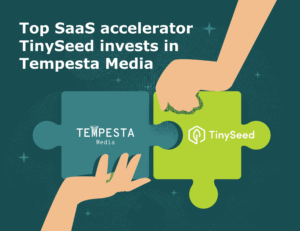Data is more valuable than ever. From showing cause-and-effect relationships to making important decisions, datasets have become a knowledge vector. They can drive economic growth, support new policies, and more.
While all data reflects reality, not all datasets are the same. One of the main distinctions is the difference between qualitative and quantitative data.
With large language models opening new possibilities in AI research, understanding the difference between quantitative and qualitative data is crucial for planning successful research projects.

Qualitative vs. Quantitative Data
What do that country’s GDP, the Nielsen ratings for your favorite show, and the latest crime statistics have in common? They’re all examples of quantitative data.
Quantitative datasets are collections of numerical values. They reflect a countable reality and allow for statistical analysis.
Qualitative datasets include non-numerical values. This data can reflect feelings, motivations, and beliefs. The internet is an endless source of qualitative data between product reviews, social media posts, images, and more.
Qualitative and quantitative data differ in a few key areas:
- Data collection methods are different. A quantitative study can rely on surveys and polls. A qualitative study can use interviews, field notes, and focus groups.
- The scope is often broader with qualitative research. It’s easier to structure quantitative data. Qualitative data often ends up in unstructured databases. However, the rise of AI and machine learning facilitates formatting data.
- Qualitative and quantitative research have different goals. A quantitative study measures or proves a relationship between variables. Qualitative research can answer “why” questions or explore a topic to gain knowledge.
- Statistical analysis is the go-to method for quantitative data. With qualitative data, researchers can use thematic analysis, synthesis, grounded theory, and more.
Recent innovations in the field of AI and machine learning are transforming the way we interact with data. Traditionally, qualitative data took more work to work with. Humans had to familiarize themselves with the dataset and use time-consuming methods to extract insights.
Machine learning algorithms could already automate the collection and analysis of quantitative data. The new generation of large language models can go further. It can identify meaning in qualitative data, recognize common themes, and synthesize findings.
Pros and Cons of Qualitative Data
Qualitative data creates value by revealing insights numbers can’t show. It allows for a deeper understanding of important issues. It answers “why” and “who” questions. It also allows researchers to look at the grand scheme of things. It often leads to new questions and theories.
The downsides of working with qualitative data include bias. Personal beliefs can shape how a researcher interprets a data point. Discrimination can also exist in AI research, depending on the training of the AI model used.

Pros and Cons of Quantitative Data
Quantitative data has several advantages. Data collection and storage are more accessible. It’s also possible to automate research. A high level of trust is associated with quantitative analysis since the results are verifiable.
However, numbers don’t always paint a comprehensive picture. A sample can be too small. Surveys can miss essential pain points.
Examples of Qualitative and Quantitative Research
The design of a study varies based on whether the researchers will use qualitative or quantitative data.
Qualitative Research
Qualitative research aims to get insights through open-ended questions and personal expression. Participants can give positive or negative answers. They can also grade items on a scale or share more complex responses.
Formats can include:
- Focus groups.
- Interviews.
- Case studies.
- Observations.
- Diaries and journals.
- Comments and emails.
- Feedback and reviews.
- Support tickets.
- Customer service calls.
Quantitative Research
Quantitative research is numerical. Common examples include :
- Analytics from a web session.
- Purchase data from your customer base.
- Financial reports.
- Quasi-experimental research is designed to measure the impact of an intervention.
- A cross-sectional survey that compares two groups.
Outcomes and Goals
Qualitative data, whether in a human or AI research context, often reflects a human experience. It can answer the “why” questions behind a theory. It can show unique insights and lead to a new theory.
For instance, a qualitative data project can answer questions like:
- How can we consistently delight our customers?
- What do people think of this political candidate?
- Which factors are contributing to the lack of local ecosystem diversity?
Quantitative research can have a descriptive, comparative, or relationship-based outcome. The purpose is to measure relationships between variables. This research can also track trends or lead to generalizations based on a sample.
Researchers can answer questions like:
- How many sales did we generate during Q1? What can we predict for Q2?
- What percentage of the votes will this candidate get?
- How many native species were affected by the construction of the new factory? By what percentage did their population drop?

Choosing the Best Approach
Qualitative and quantitative research can both reveal patterns and relationships between variables. Ideally, both should inform your critical decisions.
To choose the right approach, ask yourself what knowledge you’re after. Do you have a thesis you want to prove or disprove? Are you looking to gain more understanding of a topic?
Next, you should consider the datasets available. You should also look at the analysis methods you can use. AI research is opening up more possibilities. It lowers the cost of data collection and qualitative analysis. However, some obstacles are still linked to data quality and sample size.
Quantitative research makes the most sense if you want to measure a value, find a numerical change, or compare two variables.
You must work with qualitative data to answer a broader question or understand the “why” behind a trend.
Remember that these two approaches aren’t mutually exclusive. You’ll need to work with both to broaden your scope for complex projects.
Qualitative and Quantitative Data Research
Whether you’re working on an AI research or human-led project, differentiating between qualitative and quantitative data is a significant first step. The quantitative analysis encompasses measurable variables, while qualitative data refers to non-numerical datasets.
Tempesta Media can help identify a clear goal for your research project. We can help you formulate research questions or identify variables to measure.
Once we have answers, we’ll create a managed digital marketing plan adapted to your needs. Contact us today to learn more about our unique approach and how our Bullseye Effect solution drives results.











